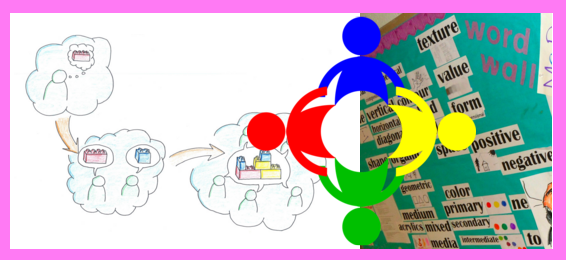


What does clustering learner needs mean?
- use patterns to identify and plan for common student needs
Common Clustered Needs & Remediations:
- Need for reading supports:
- Optional reading partners on new texts
- Make highlighted and marked up texts available
- Teacher reads aloud complex parts of text
- Provide audio recordings of texts
- Need for vocabulary building:
- Provide vocabulary lists with clear explanations
- Pinpoint and focus on key vocabulary
- Students hunt for vocabulary in textbooks, editorials, cartoons, TV, magazines, etc
- Word walls
- Vocabulary posters with words and related visuals
- Difficulty Staying on Task:
- Think pair share groups
- Student choice on learning tasks and learning modes
- Multiple modes of teacher presentation
- Shift activities during a class period
- Graphic organizers designed to model the flow of ideas
- Strengths in Specific Areas of Studies:
- Jigsaw groups
- Interest groups, interest centers
- Use learning contracts and learning centers to personalize learning
- Need for targeted instruction and practices:
- Routinely meet with students in small groups
- Assign homework targeted to key skills students need
- Varied Levels of Readiness
- Tiering
- Compacting
- Think-alouds
- Varied homework
- Text digests
- Writing frames
- Small group instruction
- Learning contracts
- Learning menus
- Materials with varied lexile levels
- Word walls
- Guided peer critiques
- Varied Interests
- Interest centers and groups
- Expert groups
- Web quests and inquiries
- Group investigation
- Independent studies
- Personalized criteria for success
- Design-a-day (personalized daily agendas)
- Varied Learning Profiles
- Visual organizers
- Varied work options
- Varied entry points
- Intelligence preference tasks – see Differentiated curriculum charts.
- Opportunities for movement
- Varying modes of teacher presentation
- Multiple Categories
- RAFTs (Role of writer, Audience, Format, Topic) – See RAFT essay article.
- Graphic organizers – see Nonlinguisitic representations article
- Personal agendas
- Cubing (considering a topic from multiple perspective) – see Directed paraphrasing article

Clustering needs is more efficient than fulfilling IEP’s for every student. More students benefit from intended remediations than initially intended. It’s easier to plan units with built in remediations that address common needs than to identify these during the unit and make them a la carte.

Preparation Steps
- Survey students interests and learning profiles
- Pre-assess students to see who will need extra (less) support and what topics need extra resources
- Determine what are the common clustered needs and variations – the top 3 that will serve most students
- Gather and create resources (see above) that match common needs and common sources of variation
- Assign students to groups that match activity types – it’s possible to use more than one grouping over the course of a project – learning groups could be different from product groups
Early Implementation Steps
- Implement learning strategies that align to common clustered needs and sources of variation
- Use formative assessments with all students to give feedback on their progress so they can improve and to improve activities
- Use student reflections to improve activities
Advanced Implementation Steps
- Design and implement systems that teach students how to set, track and reach academic goals
- Continually survey students to check if the identified clusters of needs are the correct ones

